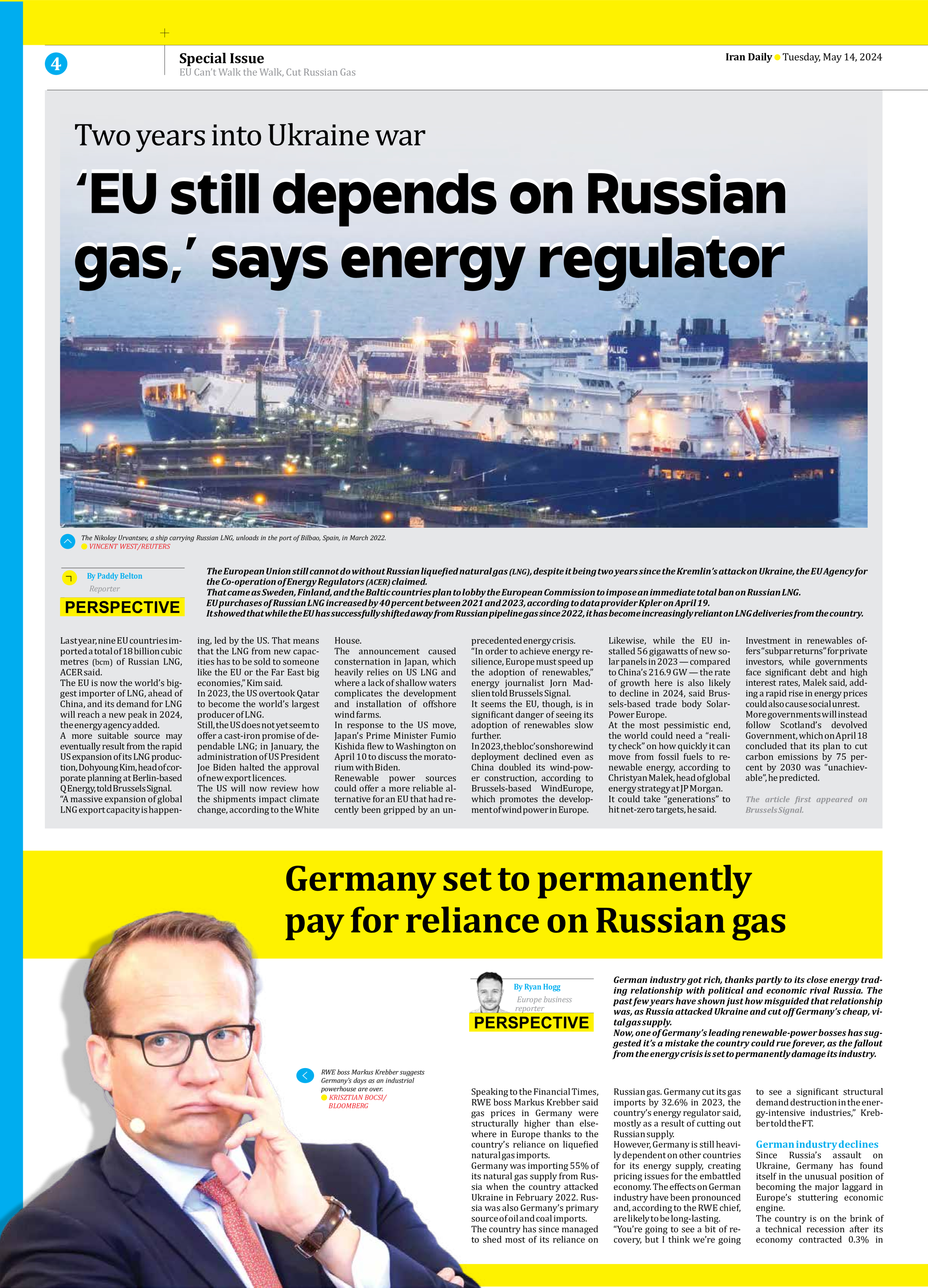
Two years into Ukraine war
‘EU still depends on Russian gas,’ says energy regulator
The European Union still cannot do without Russian liquefied natural gas (LNG), despite it being two years since the Kremlin’s attack on Ukraine, the EU Agency for the Co-operation of Energy Regulators (ACER) claimed. That came as Sweden, Finland, and the Baltic countries plan to lobby the European Commission to impose an immediate total ban on Russian LNG. EU purchases of Russian LNG increased by 40 percent between 2021 and 2023, according to data provider Kpler on April 19. It showed that while the EU has successfully shifted away from Russian pipeline gas since 2022, it has become increasingly reliant on LNG deliveries from the country.
By Paddy Belton
Reporter
Last year, nine EU countries imported a total of 18 billion cubic metres (bcm) of Russian LNG, ACER said.
The EU is now the world’s biggest importer of LNG, ahead of China, and its demand for LNG will reach a new peak in 2024, the energy agency added.
A more suitable source may eventually result from the rapid US expansion of its LNG production, Dohyoung Kim, head of corporate planning at Berlin-based Q Energy, told Brussels Signal.
“A massive expansion of global LNG export capacity is happening, led by the US. That means that the LNG from new capacities has to be sold to someone like the EU or the Far East big economies,” Kim said.
In 2023, the US overtook Qatar to become the world’s largest producer of LNG.
Still, the US does not yet seem to offer a cast-iron promise of dependable LNG; in January, the administration of US President Joe Biden halted the approval of new export licences.
The US will now review how the shipments impact climate change, according to the White House.
The announcement caused consternation in Japan, which heavily relies on US LNG and where a lack of shallow waters complicates the development and installation of offshore wind farms.
In response to the US move, Japan’s Prime Minister Fumio Kishida flew to Washington on April 10 to discuss the moratorium with Biden.
Renewable power sources could offer a more reliable alternative for an EU that had recently been gripped by an unprecedented energy crisis.
“In order to achieve energy resilience, Europe must speed up the adoption of renewables,” energy journalist Jorn Madslien told Brussels Signal.
It seems the EU, though, is in significant danger of seeing its adoption of renewables slow further.
In 2023, the bloc’s onshore wind deployment declined even as China doubled its wind-power construction, according to Brussels-based WindEurope, which promotes the development of wind power in Europe.
Likewise, while the EU installed 56 gigawatts of new solar panels in 2023 — compared to China’s 216.9 GW — the rate of growth here is also likely to decline in 2024, said Brussels-based trade body SolarPower Europe.
At the most pessimistic end, the world could need a “reality check” on how quickly it can move from fossil fuels to renewable energy, according to Christyan Malek, head of global energy strategy at JP Morgan.
It could take “generations” to hit net-zero targets, he said.
Investment in renewables offers “subpar returns” for private investors, while governments face significant debt and high interest rates, Malek said, adding a rapid rise in energy prices could also cause social unrest.
More governments will instead follow Scotland’s devolved Government, which on April 18 concluded that its plan to cut carbon emissions by 75 percent by 2030 was “unachievable”, he predicted.
The article first appeared on Brussels Signal.







